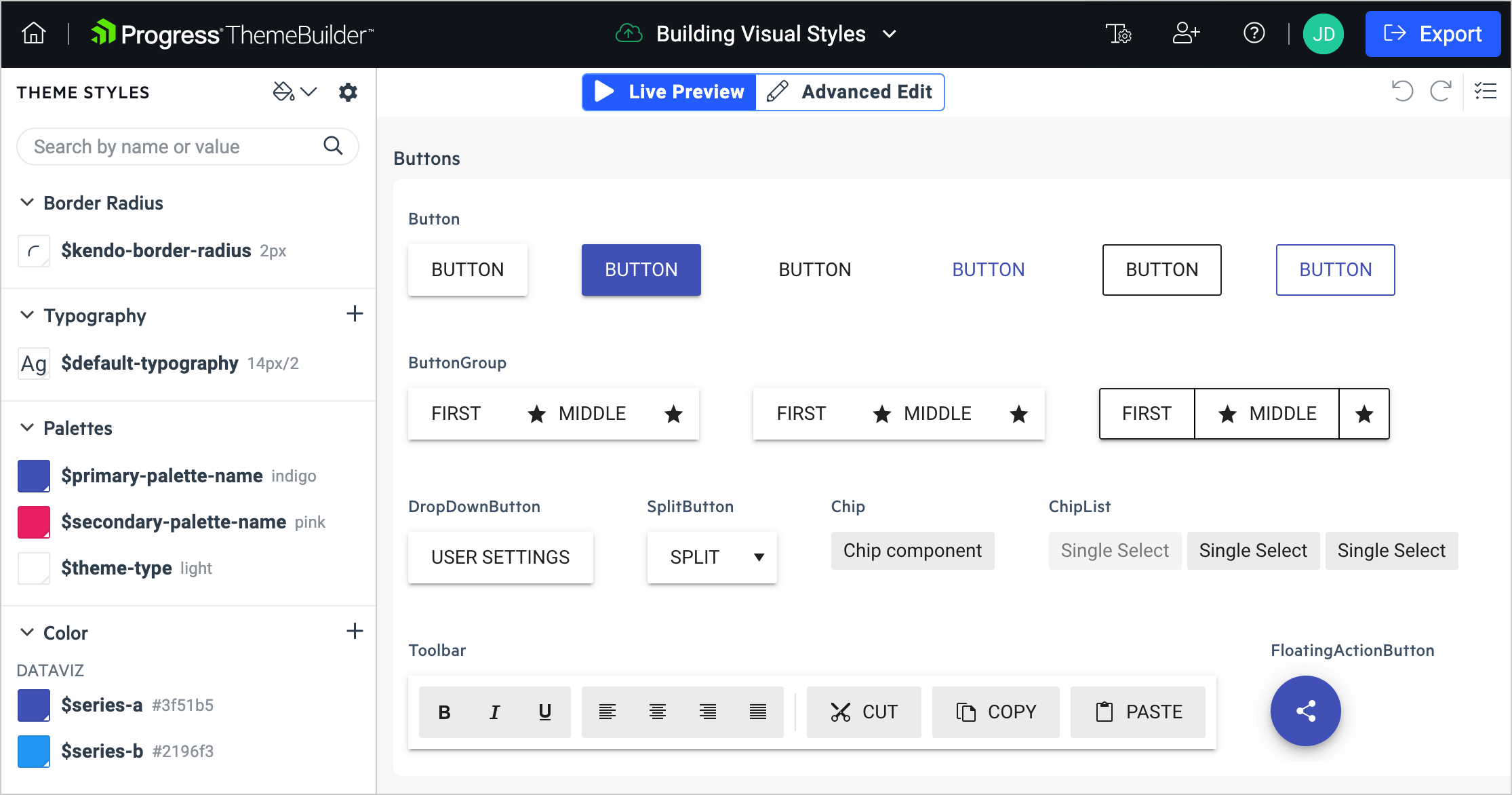When building apps in Angular, it’s common to make use of a component library — such as Material UI and PrimeNG — to assist in designing complex UIs. Yet, in the sea of free or affordable component library options lies a hidden trap for developers. These seemingly convenient choices often fall short of the enterprise-grade functionality and performance demanded by complex projects. As a result, precious developer hours are squandered on debugging and patching together a subpar design.
Kendo UI for Angular is a commercial component library designed from the ground up to increase developer productivity. It offers advanced functionality that’s been evolving for over ten years by seasoned experts in the field. This way, developers can spend more time on what’s really important, like building exciting new features and experiences.
Here’s a quick summary of what Kendo UI has to offer:
- professional-quality UI design and design tools
- the largest library of Angular components available
- productivity tools and resources
- acclaimed professional support and documentation
In this article, we’ll explore five things to consider when choosing a component library, and we’ll outline why a commercial Angular components library — such as Kendo UI for Angular — might be the right choice for your team.
1. Complex Components and Advanced Functionality
Complex components, such as Kendo UI’s Data Grid, can require an entire team of developers to build and maintain if created in-house. There’s rich functionality in components like this that could easily cause any software project to go sideways, because developers can spend hours if not weeks trying to put together even trivial functionality like paging.
The Kendo UI data grid
Components like this can have lots of tricky functionality, which means more bugs and higher usability demands. The grid in Kendo UI, for example, has advanced filtering, sorting, grouping, aggregates, virtual scrolling and so much more. This isn’t just a stereotypical HTML table, but a rich component meant to help users interact with their data. With Kendo UI, you get all this functionality right out of the box.
Other examples of complex components that aren’t normally found in non-commercial libraries are event calendars, pivot grids, and rich text editors.
2. Professional-quality, Accessible UI Design
Complex functionality means the standards for good design are high, because users expect a UI that’s performant and easy to use.
Accessibility is also a concern. Accessible UI design is more than a UI that’s aesthetically pleasing. Designing accessible components typically includes providing keyboard shortcuts, ensuring sufficient color contrast, and building functionality designed for users with disabilities. These are features that are often overlooked in free or low-cost component libraries, and may be sacrificed in in-house alternatives.
Part of the price of Kendo UI includes dedicated resources that work to deliver components that are modern, consistent, performant and accessible. Kendo UI offers four base themes: Kendo Default, Material, Fluent and Bootstrap. A ThemeBuilder also helps developers and designers customize the user experience.

Each Kendo UI theme centers around delivering a use experience that’s consistent, without requiring much effort from developers. Guidelines are available for each theme to help with UI design.
If you’re already using another library, such as Material UI, Kendo UI for Angular will fit right in alongside it; there’s no need to pick one library over the other. The ThemeBuilder also helps maintain a consistent UI with lesser-known libraries.
Components aren’t the only thing developers get from Kendo UI. There are tools and resources available to make sure developers are as productive as possible.
For example, the Visual Studio Code Productivity tool adds scaffolding and code snippets to the developer experience. This helps developers focus on the code and deliver valuable features. It’s an extension available via the marketplace in Visual Studio Code. Simply search for “Kendo UI Productivity Tools” and install the extension. This developer-friendly tool helps with project creation and integration of the Kendo UI for Angular components. The team at Kendo UI constantly invests efforts to enhance the existing functionality and add new features.
The ThemeBuilder, mentioned above, helps developers edit themes without wrestling with CSS and HTML. This helps drive a consistent user experience with any existing design guidelines. This tool is accessible via the Web and gives developers full control over the look-and-feel of the Kendo UI for Angular components.
Lastly, the Virtual Classroom is an on-demand class that teaches developers how to use Kendo UI for Angular. The online course is designed to help you get started. There are many components available in Kendo UI, and this developer resource can help navigate the library.
4. The Largest Selection of Components Available
A UI library should be the primary source of components, especially in cases where multiple apps are involved. This reduces complexity in the code, gives developers one place to go for help, and keeps licensing costs down.
Kendo UI for Angular has well over a hundred components available. The library has charts, grids, drop-downs, and date inputs, to name but a few. Each one is professionally crafted and maintained, and has productivity tools available. This gives developers the best chance at being as productive as possible without having to reinvent the wheel.
Kendo UI aims to provide everything developers need to build complex, feature-rich UIs. This way, licensing is easy to manage, there’s one place to go for help, and developers won’t feel the need to hunt down components from other libraries and potentially bring in risky dependencies.
5. Acclaimed Support and Documentation
Kendo UI’s commercial license helps maintain a team of professionals who provide expert support promptly. They meticulously create documentation and demos for every component feature.
Kendo UI offers forums, a feedback portal, and technical support. This helps developers overcome any productivity obstacle while in the middle of a project.
The forums in particular have over three million members, with well over 280K problems solved. They provide a community where developers can ask questions and learn from each other. Having such a large community with members worldwide helps developers overcome very difficult problems.
The feedback portal allows your team to become co-creators in the product, helping to shape the future of Kendo UI for Angular, so the rest of the community can benefit from exciting new component features.
Conclusion
Learning how to build complex, feature-rich UIs takes a huge amount of effort. As the complexity of the UI component increases, user demand for usability, performance, and accessibility also goes up.
Kendo UI for Angular provides a simple answer to the question: “How do I build that component?” It enables enterprise developers to focus on the business logic instead, rather than having the overhead of trying to build a complex UI.
If you’d like to give Kendo UI a try, there’s a comprehensive Getting Started tutorial available to walk you through the process. There’s also a full-featured 30-day free trial available along with the tutorial, which includes access to everything — including support, documentation, and productivity tools.






Leave a Reply